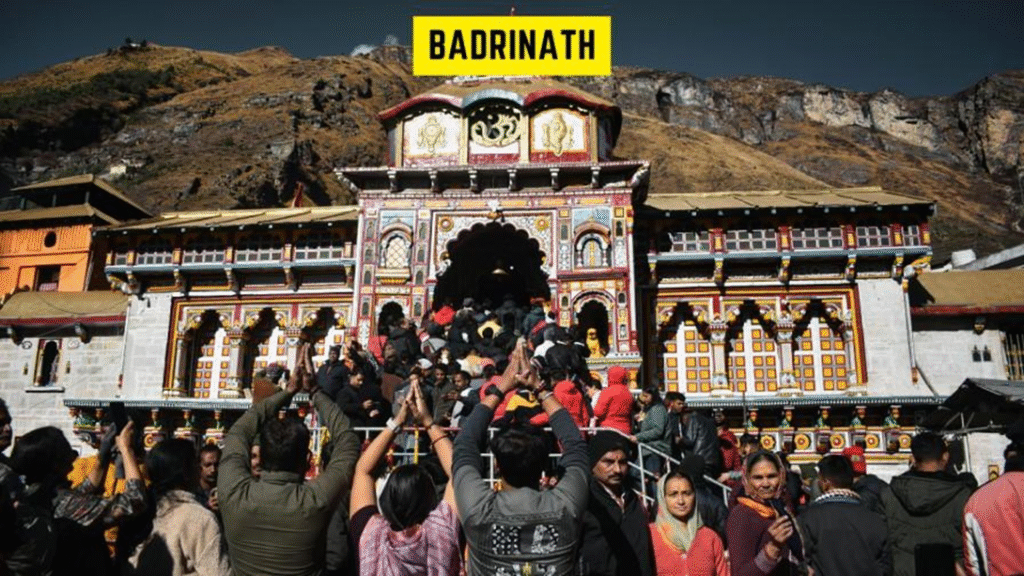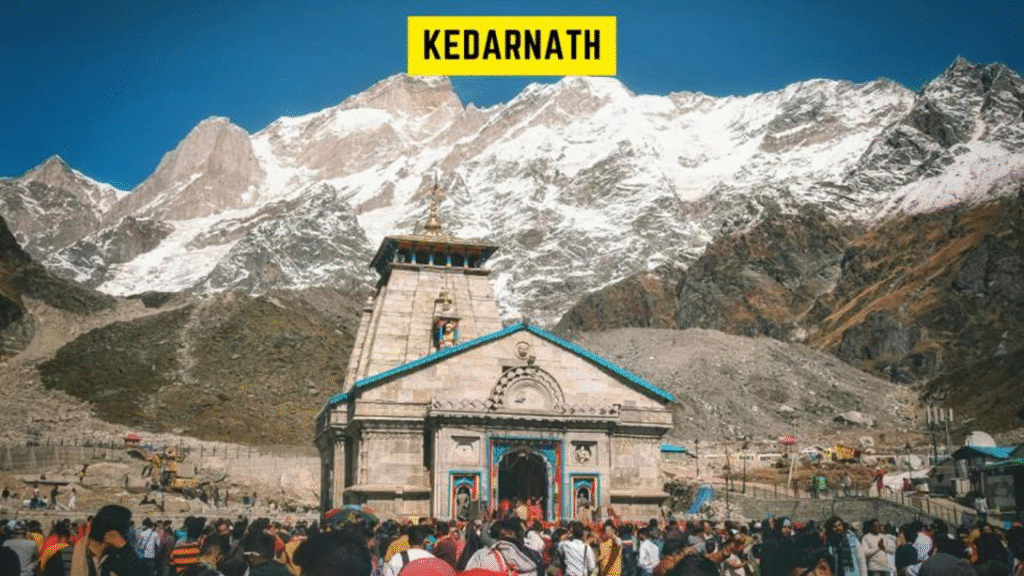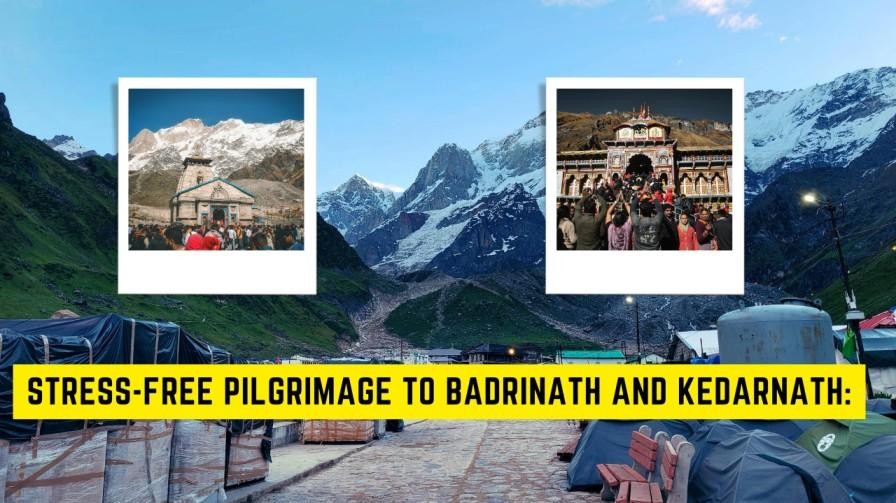A journey to Badrinath and Kedarnath is considered one of the most sacred pilgrimages in India. However, without proper preparation, it can easily become exhausting. To make the trip peaceful and fulfilling, it is advised that everything—from travel mode to accommodation—be planned in advance. When arrangements are made beforehand, the journey becomes less stressful and far more spiritually enriching.
With careful preparation, the journey is not just about reaching temples but also about feeling divine energy throughout. Packing light, registering early, and choosing the best travel route ensures that the entire yatra remains organized and calm. As a result, the focus stays on prayers and peace rather than logistics or delays.
Spiritual Importance of Badrinath and Kedarnath
The temples of Badrinath and Kedarnath are regarded as two of the holiest shrines in Hinduism. They represent balance in nature—Vishnu as the preserver and Shiva as the transformer. Both are visited by millions of devotees every year to seek blessings and liberation from worldly attachments.
Badrinath is associated with Lord Vishnu, who is believed to have meditated here amid the Himalayas. Kedarnath is dedicated to Lord Shiva, who is worshipped as one of the twelve Jyotirlingas. Together, they signify harmony between creation and destruction, devotion and detachment, and action and stillness.
Moreover, both temples are surrounded by majestic snow-clad peaks, where silence and faith merge seamlessly. The serene environment allows devotees to experience an overwhelming sense of spiritual awakening.

Badrinath – The Abode of Lord Vishnu
Badrinath is regarded as a symbol of purity, preservation, and divine knowledge. It is believed that Lord Vishnu meditated here for thousands of years. The temple stands as part of the Char Dham Yatra, and visiting it is said to cleanse the soul and remove sins.
Connection to Ancient Scriptures
In several Hindu scriptures, including the Vedas and the Mahabharata, references to Badrinath can be found. It is mentioned that Lord Vishnu came here in human form to bless mankind. The temple’s history is so deeply rooted in spirituality that even today, chanting and rituals performed here are believed to purify one’s heart and mind.
Energy of the Himalayas
Surrounded by towering peaks and clear rivers, the region’s energy feels divine. It is said that nature itself meditates here. Pilgrims often describe that their worries seem to disappear as they step into the sacred valley. The sound of bells and the cool mountain breeze make the spiritual experience even more profound.
Symbol of Devotion and Liberation
Praying at Badrinath is believed to lead one closer to moksha—spiritual liberation. Many devotees say that true peace is achieved not by reaching the temple but by surrendering completely to the divine will. As a result, Badrinath is often described as a pathway to inner freedom.

Kedarnath – The Abode of Lord Shiva
The Kedarnath Temple, located at an altitude of 3,583 meters, is one of the most revered sites in Shaivism. It is believed that Lord Shiva appeared here to bless the Pandavas after the great war of Mahabharata. Every year, thousands of pilgrims visit to seek forgiveness and divine strength.
Mythological Importance
According to legends, the Pandavas searched for Lord Shiva to repent for their sins. To avoid them, Shiva transformed into a bull and disappeared into the earth at Kedarnath. The hump of the bull was left behind, forming the temple’s main shrine. It is believed that worshipping at this spot washes away one’s sins and grants eternal peace.
Peace and Meditation
Located in the lap of the Himalayas, Kedarnath offers unmatched serenity. The stillness of the mountains, combined with the chanting of mantras, creates an atmosphere of divine calm. Many devotees meditate here to feel closer to Lord Shiva’s energy, which is believed to be strongest at dawn and dusk.
Path to Moksha
It is often said that those who visit Kedarnath with pure devotion are freed from the cycle of birth and death. The journey is not easy, yet every challenge faced on the way becomes part of the spiritual test. As the soul surrenders to faith, inner transformation naturally follows.
Combined Significance of Both Temples
Visiting both Badrinath and Kedarnath together is believed to bring complete spiritual fulfillment. Lord Vishnu and Lord Shiva, though different in form, are considered two sides of the same cosmic truth. One represents sustenance and the other liberation. Therefore, devotees feel that both must be visited to attain balance in life.
Moreover, both sites are located amid natural beauty, where rivers like the Alaknanda and Mandakini flow endlessly, reminding visitors of life’s continuity. The chanting of hymns, the ringing of temple bells, and the sight of mountains covered in snow together create an unforgettable spiritual experience.
Best Time to Visit for a Peaceful Yatra
The best months to visit are from April to June and September to October. During these months, the weather remains pleasant, and the temples are open for darshan. The post-monsoon period offers clear skies, calm surroundings, and comfortable trekking routes.
- April–May: Temples reopen after winter closure. The crowd is moderate, and conditions are ideal for travel.
- June–July: Clear weather but occasional rain showers can occur.
- August: Heavy rains make travel difficult; not recommended.
- September–October: Post-monsoon calm returns, making it the best time for peaceful darshan.
- November–March: Temples remain closed due to snow and extreme cold.
It is advised that pilgrims plan their yatra within the recommended months to avoid natural challenges.
How to Reach Badrinath and Kedarnath
Both temples are well connected by road, rail, air, and helicopter services.
By Road
Badrinath can be reached from Rishikesh (314 km), Haridwar (298 km), and Dehradun (301 km).
Kedarnath can be accessed via Gaurikund, which is 222 km from Rishikesh. From there, a 16 km trek or pony ride leads to the temple.
Road travel is preferred by most pilgrims as it offers scenic views of valleys and rivers.
By Train
The nearest railway station is Rishikesh, well-connected to major cities.
From Rishikesh or Haridwar, taxis and buses are available to reach the base camps.
By Air
The closest airport is Jolly Grant Airport (Dehradun).
Helicopter services to Phata, Guptkashi, and Kedarnath are operated during the yatra season. For Badrinath, limited flights are available from Dehradun.
It is recommended that seats be booked in advance as weather may affect flight schedules.
Accommodation and Pre-Booking
Booking accommodations in advance is highly advised. It helps in avoiding last-minute stress during the peak season. Many hotels, guest houses, and dharamshalas provide both basic and luxury facilities near temple areas. Packages often include meals and transfers, which make the experience smoother. When rooms are booked early, more time can be dedicated to prayers and temple rituals.
Yatra Registration and Permits
Registration for the Char Dham Yatra is mandatory and can be completed online or at registration centers.
It ensures safety, crowd management, and emergency assistance. Pilgrims must carry ID proofs and yatra passes at all times. Early registration allows better planning and prevents last-minute delays.
Packing Essentials for the Himalayas
It is advised that pilgrims carry the following items for comfort and safety:
- Warm clothes and thermals
- Trekking shoes and rain gear
- Basic medicines and first-aid kit
- ID proofs, yatra permits, and cash
- Dry fruits, snacks, and energy drinks
- Power bank, torch, and reusable water bottle
Traveling light while keeping essentials ensures a comfortable and safe journey.
Final Thoughts
A pilgrimage to Badrinath and Kedarnath is not only a physical journey but a spiritual awakening. When everything is planned in advance—routes, registrations, and stays—the experience becomes peaceful and divine. With the blessings of Lord Vishnu and Lord Shiva, the yatra is remembered not just for its beauty but for the serenity it brings to the heart and soul.






